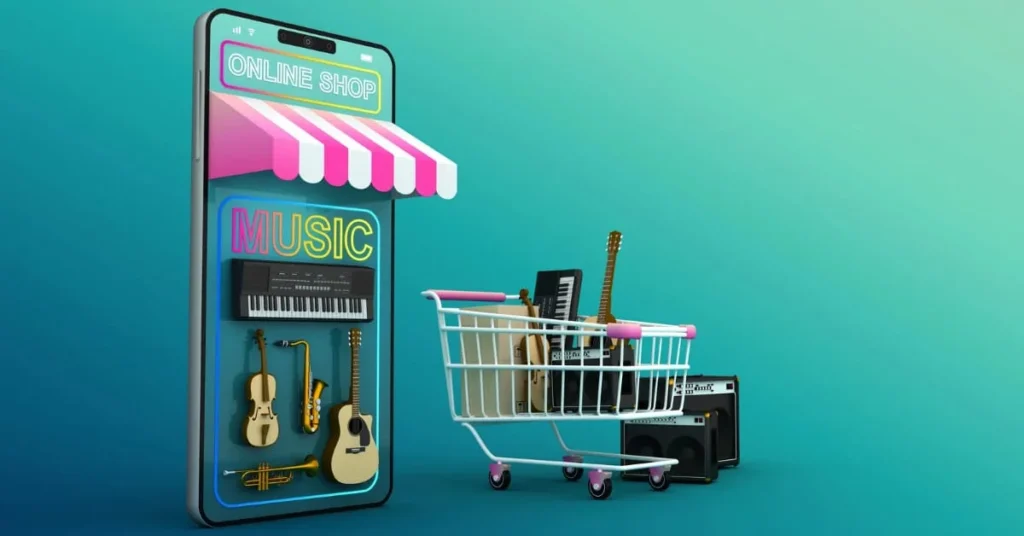Shopping cart abandonment is a significant challenge faced by online retailers. Imagine a potential customer who has browsed your website, added items to their cart, but just before finalizing the purchase, they leave without completing the transaction. This is shopping cart abandonment—a phenomenon where customers add products to their online shopping cart but exit the website without buying.
This common issue can have a considerable impact on a retailer’s bottom line. Every abandoned cart represents a lost sale and potential revenue that your business misses out on. In fact, the average cart abandonment rate across various industries is around 70%, which means a significant portion of potential sales is slipping away. Understanding why customers abandon their carts and implementing effective strategies to recover these lost sales is crucial for any e-commerce business looking to optimize its revenue.
In this blog, we will explore the main reasons behind shopping cart abandonment and discuss practical strategies to reduce its occurrence. More importantly, we will delve into effective techniques for recovering abandoned carts, turning potential losses into profitable sales. By the end of this guide, you’ll be equipped with actionable insights to boost your conversion rates and increase your revenue.
Understanding Why Shoppers Abandon Carts
To effectively combat shopping cart abandonment, it’s essential first to understand the reasons why shoppers leave their carts behind. While each customer may have unique reasons for not completing a purchase, several common factors contribute to this behavior. By identifying these factors, e-commerce businesses can implement targeted strategies to minimize abandonment and improve conversion rates.

Common Reasons for Cart Abandonment
- Unexpected Costs: One of the most frequent reasons shoppers abandon their carts is the sudden revelation of unexpected costs. Extra charges for shipping, taxes, or fees that appear late in the checkout process can surprise customers and deter them from finalizing their purchase. Transparency is key; when customers feel blindsided by additional expenses, they often leave the site in frustration.
- Complicated Checkout Processes: A lengthy or complex checkout process can quickly drive potential buyers away. In today’s fast-paced digital world, customers expect a seamless and straightforward checkout experience. If the process involves too many steps, requires creating an account, or asks for excessive information, shoppers are more likely to abandon their carts and look elsewhere.
- Lack of Trust or Security Concerns: Trust plays a crucial role in online shopping. If customers perceive that your website lacks sufficient security measures or seems untrustworthy, they are unlikely to complete a purchase. Concerns about payment security, data privacy, and potential fraud can all contribute to cart abandonment. Displaying trust badges, SSL certificates, and clear privacy policies can help alleviate these concerns.
- Limited Payment Options: Offering a variety of payment methods is essential for catering to different customer preferences. Some shoppers may prefer credit cards, while others might want to use digital wallets or buy now, pay later options. If your site does not support the payment method a customer prefers, they may abandon their cart and look for a competitor who does.
- Website Errors or Crashes: Technical issues, such as slow-loading pages, errors during the checkout process, or website crashes, can frustrate customers and lead them to abandon their carts. Ensuring that your website is optimized for performance and regularly tested for bugs can help prevent these issues from driving potential customers away.
Analyzing Customer Behavior
Understanding customer behavior is crucial for identifying and addressing the reasons behind cart abandonment. Using tools like Google Analytics, heatmaps, and session recordings, businesses can gain valuable insights into how customers interact with their website. By analyzing this data, you can pinpoint where shoppers are dropping off in the checkout process and implement targeted improvements to reduce abandonment rates.
Strategies to Reduce Cart Abandonment
Reducing shopping cart abandonment is essential for improving conversion rates and increasing revenue. By understanding the common reasons behind cart abandonment, businesses can implement effective strategies to create a smoother shopping experience and encourage customers to complete their purchases. Here are some proven strategies to reduce cart abandonment:
1. Simplifying the Checkout Process
A streamlined checkout process is one of the most effective ways to reduce cart abandonment. Shoppers prefer a quick, easy, and hassle-free experience. Here’s how to achieve that:

- Minimize the Number of Steps: Reduce the number of steps required to complete a purchase. Ideally, aim for a one-page checkout where customers can fill in their information without having to click through multiple pages.
- Guest Checkout Options: Allow customers to make purchases without creating an account. Many shoppers abandon their carts when they are forced to register or log in before buying. Offering a guest checkout option can significantly reduce this friction.
- Auto-Fill and Address Verification: Implement auto-fill features for returning customers and address verification tools to speed up the checkout process and reduce errors.
2. Offering Multiple Payment Options
Different customers have different preferences for payment methods. To cater to a diverse audience, it’s important to provide a variety of payment options, including:
- Credit and Debit Cards: Ensure you support all major credit and debit cards.
- Digital Wallets: Offer options like PayPal, Apple Pay, Google Pay, and other popular digital wallets to provide flexibility and convenience.
- Buy Now, Pay Later Services: Integrate payment solutions like Afterpay, Klarna, or Affirm, which allow customers to spread out payments over time. This can reduce the initial financial burden and increase conversions.
3. Building Trust with Customers
Trust is a significant factor in whether a shopper completes a purchase. Here are ways to build and maintain trust:
- Highlight Security Features: Display security badges and SSL certificates prominently during the checkout process to reassure customers that their information is safe.
- Transparent Privacy Policies: Clearly outline your privacy policies and ensure they are easily accessible. Customers want to know how their data will be used and protected.
- Customer Reviews and Testimonials: Displaying reviews and testimonials from satisfied customers can help build credibility and reassure potential buyers about the quality of your products and services.
4. Transparent Pricing
Unexpected costs can be a major deterrent for shoppers. To avoid this, be transparent about pricing from the beginning:
- Display All Costs Upfront: Include all costs, such as shipping fees, taxes, and any additional charges, as early as possible in the shopping process. This prevents surprises during checkout and reduces cart abandonment rates.
- Offer Free Shipping: If possible, consider offering free shipping, or set a minimum purchase threshold to qualify for free shipping. This can be a powerful incentive for customers to complete their purchases.
5. Optimizing for Mobile Users
With more consumers shopping on their mobile devices, ensuring your website is mobile-friendly is crucial:
- Responsive Design: Ensure your website is responsive and works seamlessly across all devices, including smartphones and tablets.
- Simplified Mobile Checkout: Simplify the checkout process specifically for mobile users. Use large buttons, easy-to-fill forms, and mobile-friendly payment options to make purchasing on mobile devices as easy as possible.
These strategies not only enhance the overall shopping experience but also address specific pain points that often lead to cart abandonment. By implementing these changes, you can reduce the abandonment rate and boost your conversions.
Techniques to Recover Abandoned Carts
Even with strategies in place to reduce shopping cart abandonment, it’s inevitable that some customers will still leave their carts behind. However, this doesn’t mean all hope is lost. With the right techniques, you can recover many of these abandoned carts and convert them into sales. Here are some effective methods to recover abandoned carts:

1. Email Remarketing Campaigns
Email remarketing is one of the most effective strategies to recover abandoned carts. When done correctly, it can remind customers of the items they left behind and persuade them to complete their purchase. Here’s how to maximize the effectiveness of your email remarketing campaigns:
- Craft Compelling Abandoned Cart Emails: Create emails that are engaging and to the point. Use a catchy subject line to grab the reader’s attention, and personalize the content by including the customer’s name and the items they abandoned.
- Timing and Frequency: The timing of your emails is crucial. The first email should be sent within a few hours of the cart abandonment to keep the items fresh in the customer’s mind. Follow up with a second email after 24 hours, and a third a few days later if they haven’t yet completed their purchase. Be careful not to overwhelm your customers with too many emails, as this can lead to unsubscribes.
- Personalization and Dynamic Content: Personalization goes a long way in converting abandoned carts. Use dynamic content to show the specific items the customer left behind and suggest related products they might be interested in. Include customer service information in case they have any questions or need help completing their purchase.
2. Retargeting Ads
Retargeting ads are a powerful tool for bringing back potential customers who have abandoned their carts. These ads appear on other websites or social media platforms that your customers visit after leaving your site, reminding them of the items they left behind.
- Dynamic Retargeting: Use dynamic retargeting to display ads that feature the specific products the customer abandoned. This personalized approach increases the chances of the customer returning to your site to complete their purchase.
- Incentives in Ads: Consider including incentives, such as discounts or free shipping, in your retargeting ads to encourage customers to return and finish their transaction.
3. Exit-Intent Popups
Exit-intent popups are a smart way to capture the attention of customers right before they leave your website. These popups appear when a user’s mouse moves toward the exit button, signaling that they are about to leave.
- Engaging Offers: Use exit-intent popups to present an enticing offer, such as a discount code or free shipping, to encourage customers to stay and complete their purchase.
- Capture Email Addresses: If the customer is leaving, you can also use the popup to capture their email address for follow-up remarketing campaigns.
4. SMS Reminders
SMS reminders are another effective channel for recovering abandoned carts. With high open and response rates, SMS can directly engage customers and prompt them to return to their carts.
- Personalized Messages: Send personalized SMS messages that remind customers of the items they left behind and provide a direct link to their cart.
- Exclusive Offers: Offer exclusive discounts or promotions to customers who complete their purchase through the SMS link, creating a sense of urgency and exclusivity.
5. Offering Discounts and Incentives
Sometimes, a small nudge is all that’s needed to convince a customer to complete their purchase. Offering discounts or incentives can be an effective way to recover abandoned carts.
- Discount Codes: Provide a discount code for a percentage off the customer’s order if they complete their purchase within a certain time frame. This creates a sense of urgency and encourages quick action.
- Free Shipping: Offer free shipping as an incentive for customers to return to their cart and finish their purchase. Free shipping is a powerful motivator and can significantly reduce cart abandonment rates.
By employing these techniques, you can effectively recover abandoned carts and convert potential lost sales into profitable transactions. Each method offers unique advantages, and combining several of them can create a comprehensive strategy for recovering abandoned carts.
Measuring the Effectiveness of Recovery Strategies
Implementing strategies to reduce cart abandonment and recover abandoned carts is only half the battle. To truly optimize your efforts, it’s essential to measure the effectiveness of these recovery strategies and continuously refine them based on data-driven insights. By tracking the right metrics and experimenting with different approaches, you can maximize your conversion rates and ensure a high return on investment (ROI).

1. Key Metrics to Track
Understanding the success of your recovery efforts begins with monitoring key performance indicators (KPIs). Here are some crucial metrics to keep an eye on:
- Conversion Rate: This metric indicates the percentage of users who complete a purchase after abandoning their cart. A higher conversion rate suggests that your recovery strategies are effective in bringing customers back to complete their transactions.
- Cart Abandonment Rate: This is the percentage of shoppers who add items to their cart but leave without completing the purchase. Monitoring changes in this rate can help you gauge the effectiveness of your efforts to reduce cart abandonment over time.
- Recovery Rate: The recovery rate measures the percentage of abandoned carts that are successfully converted into sales through your recovery strategies, such as email remarketing, retargeting ads, or exit-intent popups.
- Average Order Value (AOV): Tracking the average order value of recovered carts can provide insights into the profitability of your recovery efforts. If your recovery strategies lead to higher AOV, it indicates that not only are customers returning to complete their purchases, but they are also purchasing more items.
2. A/B Testing Strategies
A/B testing, or split testing, is a powerful method for optimizing your recovery strategies. By comparing two versions of a strategy to see which performs better, you can make data-driven decisions to improve your approach. Here’s how to effectively use A/B testing:
- Testing Email Campaigns: Experiment with different elements of your abandoned cart emails, such as subject lines, email content, images, and call-to-action (CTA) buttons. Test variations to determine what resonates most with your audience and drives higher conversion rates.
- Evaluating Popups and Incentives: Test different types of exit-intent popups, such as offering a discount versus free shipping, to see which is more effective in reducing cart abandonment. Similarly, experiment with various incentive amounts and types to find the optimal offer that encourages customers to complete their purchases.
- Analyzing Retargeting Ads: Create multiple versions of your retargeting ads with different images, messaging, and CTAs to identify the most compelling combination. Use this data to refine your ads and maximize your return on ad spend (ROAS).
3. Analyzing Data and Feedback
Collecting and analyzing data is crucial for understanding the effectiveness of your recovery strategies and identifying areas for improvement. Here are some ways to leverage data and feedback:
- Customer Feedback: Encourage customers to provide feedback on their shopping experience, including why they may have abandoned their cart. This qualitative data can provide valuable insights into pain points and areas where you can improve the checkout process.
- Behavioral Analytics: Use tools like Google Analytics or heatmaps to analyze customer behavior on your website. Identify patterns in where customers are dropping off in the checkout process and make adjustments accordingly.
- Regular Performance Reviews: Continuously review the performance of your recovery strategies to identify trends and make data-driven adjustments. Set up regular check-ins to evaluate KPIs and refine your approach based on what’s working and what’s not.
By closely monitoring these metrics, conducting A/B tests, and analyzing customer feedback, you can fine-tune your recovery strategies to be more effective. This ongoing process of measurement and optimization will help you reduce cart abandonment rates, recover more lost sales, and ultimately increase your revenue.
Conclusion
Shopping cart abandonment is a prevalent challenge that can significantly impact an e-commerce business’s revenue. However, by understanding the reasons behind cart abandonment and implementing effective strategies, businesses can not only reduce abandonment rates but also recover lost sales.
We’ve explored various methods to minimize cart abandonment, such as simplifying the checkout process, offering multiple payment options, building customer trust, and ensuring transparent pricing. By optimizing for mobile users and maintaining a seamless shopping experience, businesses can further enhance customer satisfaction and encourage more completed transactions.
In addition to reducing cart abandonment, we’ve also covered several powerful techniques to recover abandoned carts. From crafting compelling email remarketing campaigns and leveraging retargeting ads to using exit-intent popups and SMS reminders, these strategies provide multiple touchpoints to re-engage potential customers. Offering discounts and incentives serves as an additional motivator, nudging customers to finalize their purchases.
To maximize the effectiveness of these strategies, it’s crucial to measure their impact continually. Tracking key metrics such as conversion rates, cart abandonment rates, and recovery rates will provide valuable insights into your recovery efforts’ success. By conducting A/B tests and analyzing customer feedback, you can refine your approach, ensuring your strategies remain relevant and effective.
Ultimately, the goal is to create a seamless, trustworthy, and engaging shopping experience that reduces friction and builds customer loyalty. By doing so, you can significantly reduce cart abandonment, recover lost sales, and, most importantly, increase your revenue.














